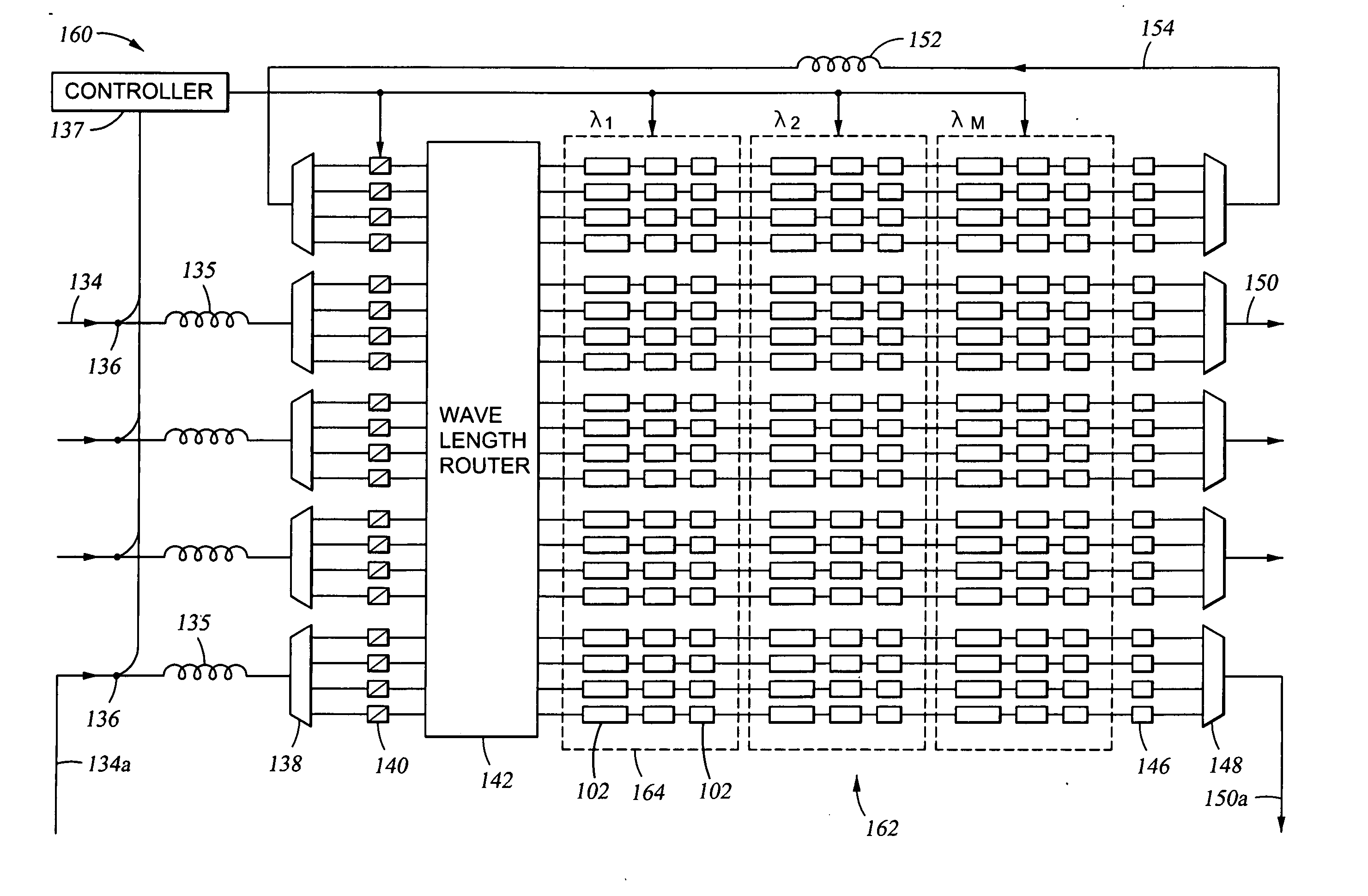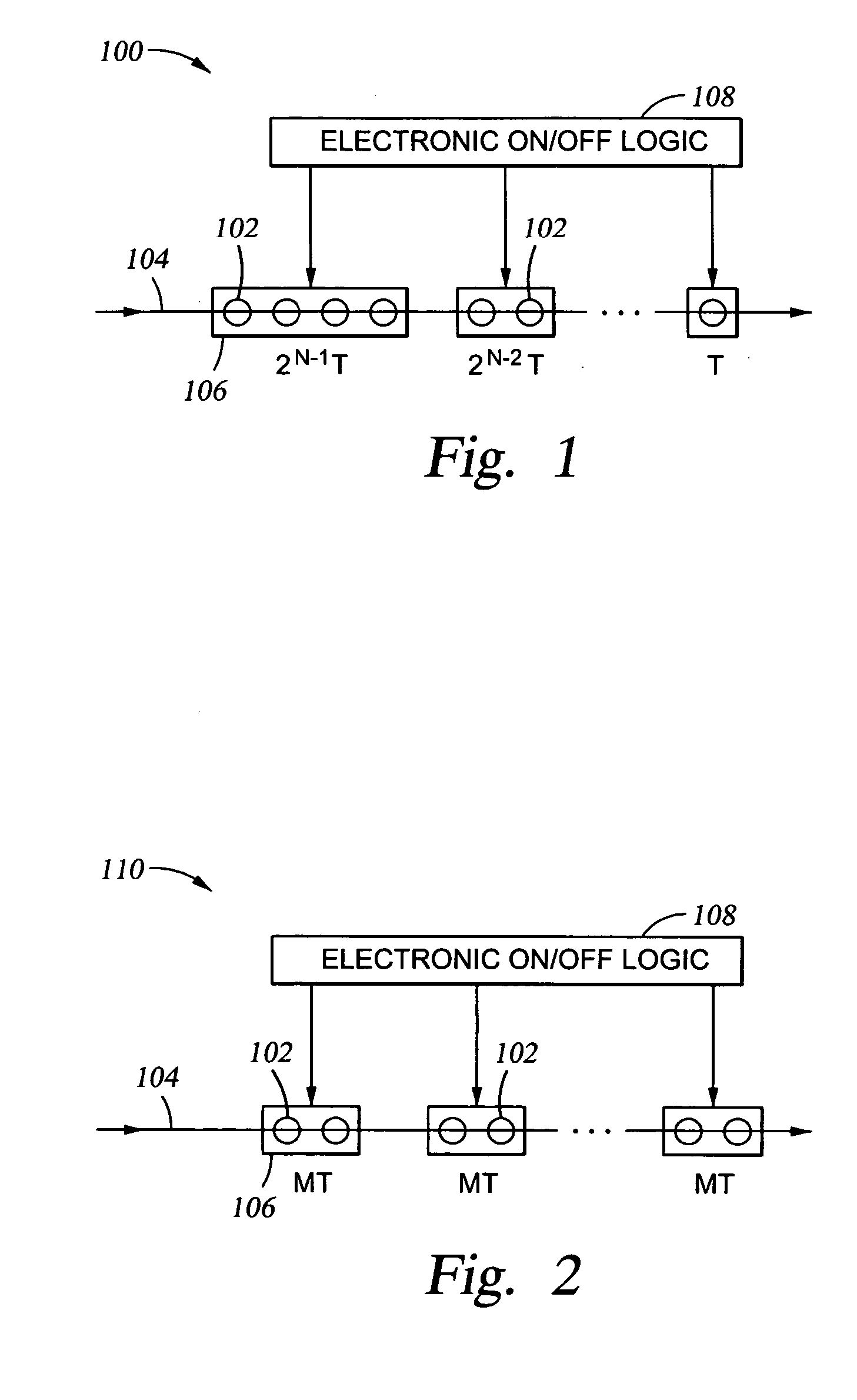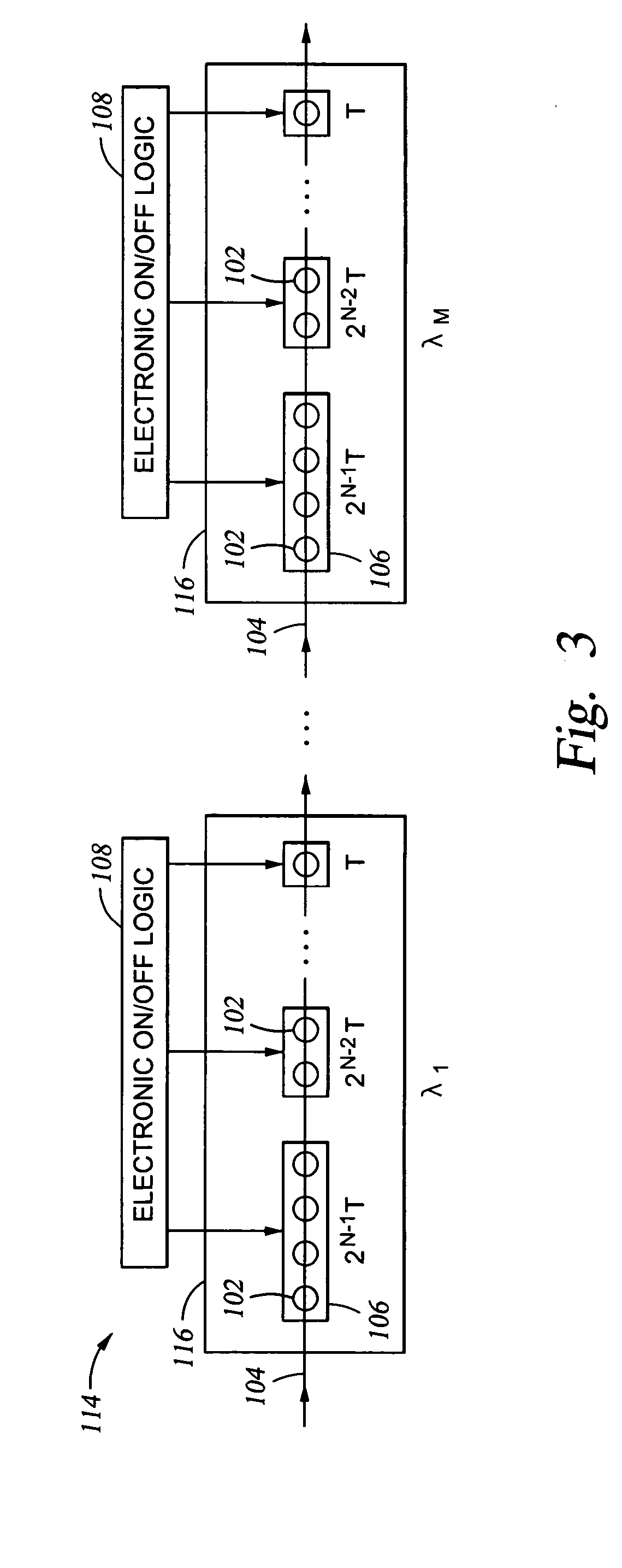All optical variable buffer queue useful in optical packet networks
a buffer queue and optical variable technology, applied in multiplex communication, electrical equipment, wavelength-division multiplex systems, etc., can solve the problems of difficult scaling of electronic routers in wdm networks to a large number, difficulty in implementing optical memory, and especially random access optical memory
- Summary
- Abstract
- Description
- Claims
- Application Information
AI Technical Summary
Problems solved by technology
Method used
Image
Examples
Embodiment Construction
[0024] Packet loss at an optical router may be greatly reduced by including controllable optical buffers either on the input side of the router or on the output side or on both sides, thus providing a controllable queuing function to the router, either from the input fiber into the optical router or from the optical router to the output fiber.
[0025] Although the invention is not so limited, one type of optical buffer is a variable all-optical unit 100 illustrated schematically in FIG. 1. It includes a series of microresonators 102 arranged along an optical waveguide 104 and grouped in N exponentially sized delay components 106 serially connected along the waveguide 104. Each delay component 106 contains 2M serially connected microresonators 102, where M increases from 0 to (N−1) for the N delay components 106. An electronic on / off logic 108 electronically tunes the resonances of the microresonators 102 to vary the finesse F of the resonant microcavities. The value of the finesse F ...
PUM
 Login to View More
Login to View More Abstract
Description
Claims
Application Information
 Login to View More
Login to View More - R&D
- Intellectual Property
- Life Sciences
- Materials
- Tech Scout
- Unparalleled Data Quality
- Higher Quality Content
- 60% Fewer Hallucinations
Browse by: Latest US Patents, China's latest patents, Technical Efficacy Thesaurus, Application Domain, Technology Topic, Popular Technical Reports.
© 2025 PatSnap. All rights reserved.Legal|Privacy policy|Modern Slavery Act Transparency Statement|Sitemap|About US| Contact US: help@patsnap.com



